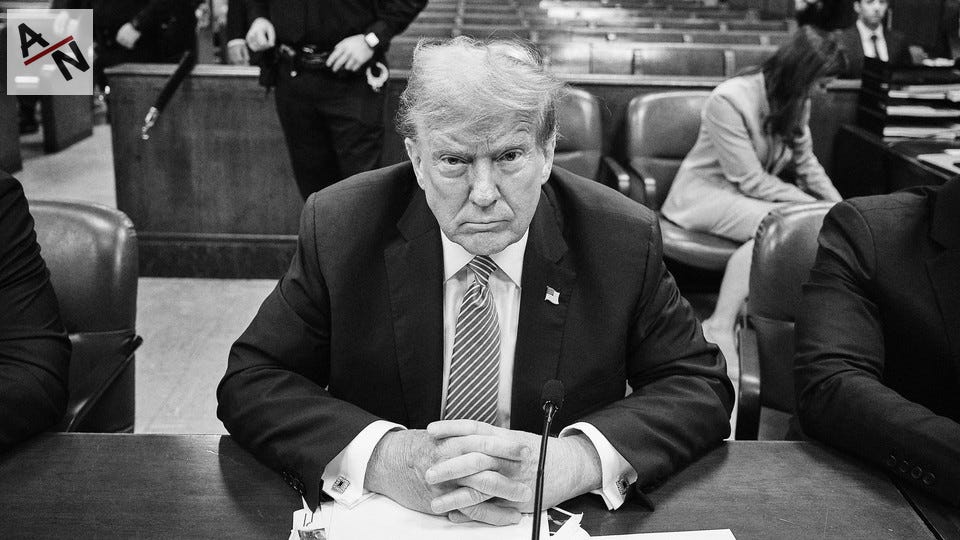Tariffs, Tilt & Tensions | Aditya's Newsletter
What Trump’s 2025 Moves Mean for India?As Washington slaps a 25% tariff on a wide range of Indian exports starting August 1.
As Washington slaps a 25% tariff on a wide range of Indian exports starting August 1, analysts are watching not just trade figures—but the deeper political messaging behind the move. The return of Donald Trump to the White House has reshaped diplomatic calculations, especially in South Asia.
But the tariff isn’t the only signal. In the same breath, the U.S. has announced new trade concessions to Pakistan and a joint strategic oil reserve venture with Islamabad. Together, these moves have stirred anxiety in New Delhi, raising old questions: Is Washington reviving Cold War-era strategic balancing between India and Pakistan? And what will India do next?
The Trade Crackdown Returns
The latest 25% tariff—announced on July 30—affects an estimated $58 billion worth of Indian exports, from textiles to auto parts. The move comes just days after Trump accused India of “unfair subsidies, corrupt inspections, and anti-American regulation.”
This isn’t the first trade friction between the two countries. Back in 2018, during Trump’s first term, the U.S. imposed a 25% tariff on steel and 10% on aluminum imports, India included, citing national security risks under Section 232 of the Trade Expansion Act (BBC).
Then in 2019, Trump removed India from the Generalized System of Preferences (GSP), a preferential trade programme that had allowed thousands of Indian products to enter the U.S. duty-free (source).
Meanwhile, Pakistan Gets a Warmer Handshake
The timing of Trump’s India tariff coincides with a softening U.S. stance on Pakistan. Just a day earlier, the Trump administration announced a $1.2 billion energy deal with Islamabad, including co-investment in oil storage and liquefied gas terminals in Gwadar.
In addition, the U.S. has agreed to revisit certain tariff lines on Pakistani textiles and surgical goods—a sector that competes directly with Indian MSMEs (Dawn).
Analysts say this is not just economics. Trump has long viewed Pakistan through a transactional lens, but his current focus on regional logistics and exit strategies from Afghanistan may have revived the perceived utility of Islamabad.
In 2018, he cut $1.3 billion in military aid to Pakistan, calling it deceitful. But by 2025, his tone has shifted. Earlier this year, the Pentagon released $397 million for F-16 sustainment in Pakistan, citing “regional counter-terror capability support” (US DoD).
What Does This Mean for India?
India is not economically dependent on the U.S. for survival—but the ties run deep:
~11% of Indian exports go to the U.S.
~20% of FDI inflow into India is U.S.-origin
~70% of elite Indian students abroad study in the U.S.
U.S. tech companies dominate India’s digital infrastructure (Brookings)
In strategic terms, the U.S. has backed India in forums like the QUAD and Indo-Pacific dialogues, especially to counterbalance China. But sudden moves like these destabilize that trust.
“This isn’t just about tariffs. It’s about power signaling,” says Rohan Kapoor, South Asia analyst at Gateway House. “India must now choose: retaliate with trade barriers, pivot further toward Europe, or double down on self-reliance.”
India's Response So Far
India’s Commerce Ministry has called the move “discriminatory and retaliatory”, and hinted at counter-tariffs on select U.S. farm imports and tech equipment. There's also talk of invoking WTO dispute mechanisms, although outcomes are notoriously slow.
Foreign Minister S. Jaishankar, in a brief statement, said, “India believes in strategic autonomy. We do not accept trade coercion tied to political motives.”
However, sources indicate backchannel diplomatic communication is still active. Prime Minister Modi, currently facing pressure from exporters and business lobbies, is reportedly weighing a bilateral visit to Europe to offset the economic impact.
The Big Picture: Cold Winds Return
Trump’s return marks a resumption of unilateral diplomacy, where deals are transactional, not long-term. For India, this means diversifying its dependencies—both in defense procurement and digital ecosystems.
Geopolitically, New Delhi may inch closer to France, the UAE, and Japan, while reinforcing ties with Russia and ASEAN for balance. The dream of a G7-like alliance with the U.S. looks more distant now.
Whether this is temporary turbulence or the start of a deeper shift in U.S.–India ties, one thing is certain: New Delhi must prepare for strategic unpredictability.
This editorial is powered by Alle’s ClinX — India’s boldest hygiene startup building not just cleaner spaces, but cleaner thinking.




